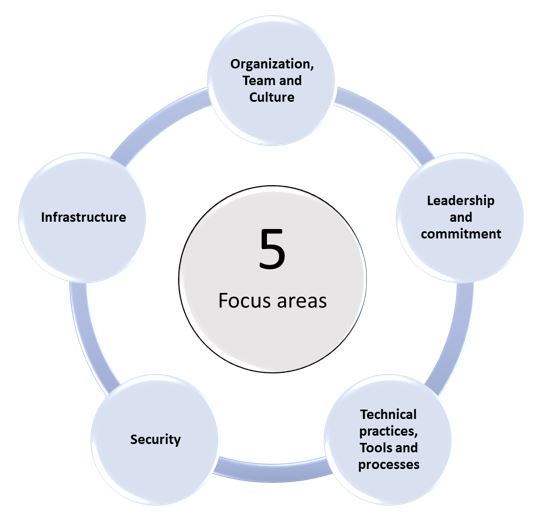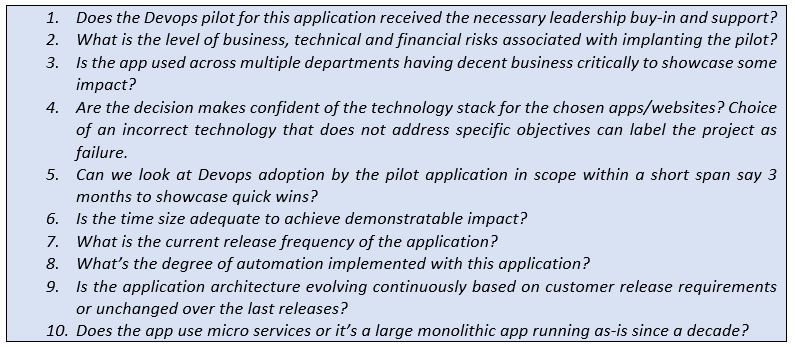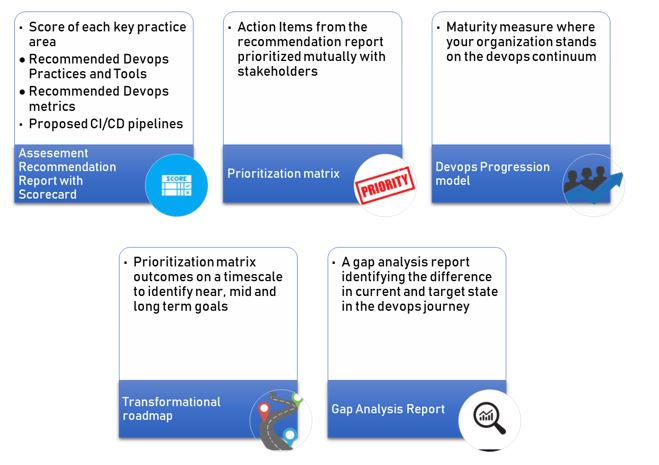We all are living in a world which is going through continuous volatility, uncertainty, complexity, and ambiguity – VUCA. It has become shorthand for describing the difficult uncertain environment and disruptions that many organizations and their leaders face today. New technologies, ways of working, and players regularly change the rules, and sometimes the game itself.
Most CIOs are struggling to deliver IT successfully with an every day changing technology landscape, more demanding requirements from technoid customers and leaner operating models. The absence of a clear roadmap that can help align the new capabilities with business priorities further adds to the challenge. One thing is sure: Unless you are riding a wave, you most likely aren’t sleeping well for fear of drowning. The need of the hour is to adapt fast while embracing the change with both hands. It’s here where the CIOs choose to go digital building on world-class transformational business practices that require a paradigm shift in thinking to help streamline processes and accelerate performance.
While there are multiple philosophies which can help in “Leading in a disruptive world”, AI, IOT, Analytics to name a few a clear winner is DevOps as Disruptive Innovation.
DevOps clubbed with a new operating model with allow organizations to get a competitive edge in the market by improving their time to market and product cycle times as compared to traditional software development and maintenance approaches.
Embracing DevOps has multiple benefits to organizations. Few of them are:

So, what is DevOps Assessment? It’s an assessment of maturity the organization have in 5 key focus areas which are the pillars of building an organization. It consists of a set of questions that target the stakeholders and focus groups that would help answer holistic view of portfolios, key application workflows, enterprise architecture and culture. The outcome/report of this exercise would help organizations identify if they are moving in the right direction on their digital transformation journey.

DevOps would involve multiple disciplines like Leadership, continuous learning, continuous monitoring, continuous integration and deployment, DevOps Security and infrastructure. and three main dimensions – People, Processes and Technology which are broadly covered under the 5 focus areas.
Selecting relevant Pilot candidates for assessment is crucial for DevOps success journey. Candidates can be projects, programs, products or portfolios. A successful pilot would be the one that acts as a proof of concept, showing visible results across the organization inspiring others to be onboarded on the train of transformation. Organizations may want to dive headfirst without understanding the long-term impact but it’s worth spending the time and energy to do a collective assessment on which potential business impact can be generated and can act as Devops ambassadors in the organization.
To select a pilot the following maybe some of the guiding criteria although it would primary be governed by the business priority:

Budgeting for DevOps is a much bigger discussion that requires multiple factors to be consider besides the central IT budget allocated for the program for a year. Since the focus of this article is Devops Assessment I would cover it in my next blog.
The assessment data would be collected by involving and creating focus groups – the necessary teams which would be involved in the entire cycle. We can broadly cluster them as:
- Executive Management like CIOs, Business Leaders, Directors or VPs
- Middle Management like governance teams, program managers, project managers, products owners
- Application Teams consisting of developers, business analysts, testers, architects, infrastructure engineers
- DevOps Leaders like Agile and DevOps Coaches, Scrum Masters, transformational experts
- Other business teams like Legal, Marketing, human resources
A detailed set of questionnaires forming the DevOps Playbook, for each focus area would be shared with the identified stakeholders and response would be collected. This would be done over a series of workshops collectively with the all the teams over a period of 4-6 weeks.
DevOps Assessment outcome
The assessment scoring and analysis for the identified key areas would be done by giving weightage to each focus area based on the business priority agreed by the stakeholders. It need not be equally distributed infact would be rated based on interviews, observations and interactions with application and support teams. The key deliverables of the assessment outcome would be:

To ensure that your DevOps transformation is successful, it’s imperative that the team identified is composed of strong leaders who would advocate and propagate the message within the multiple teams. Substantial involvement from senior management with a dramatic downward push to have all teams work collaboratively is a must. The challenges faced during the implementation would vary from organization to organization which needs to be tackled on case to case basis. Especially in large financial organizations like banks or insurance companies where the central apps run on legacy monolithic apps is difficult but not impossible to achieve. DevSecOps, where security is integrated within the entire CI/CD lifecycle, can help overcome the impediments. What is more important is whether the organization is culturally open for the change not only at the architectural level but from an overall mindset change. In today’s customer-centric and fast-paced world companies can’t choose to transform in key areas and let others go. They have to walk the change together. DevOps assessment would help them get this view as to where they stand with respect to changing tools, technology and business landscape aligning them with what would be their future strategy.

 English | EN
English | EN 
